When to Plant Grass Seed in Massachusetts
BY NICKI DESTASI | JUNE 6TH, 2023 | LAWN CARE, MASSACHUSETTS, UNCATEGORIZEDWith its picturesque landscapes and prestigious institutions like Harvard and UMass, Massachusetts boasts a wealth of luscious green lawns. However, certain challenges can arise amidst this verdant beauty, from pests and diseases to unpredictable weather and irregular maintenance practices, leading to damage and the need for reseeding.
To achieve a vibrant and resilient turf, it becomes imperative to master the art of timing – knowing when to plant grass seed in Massachusetts. By understanding the optimal windows of opportunity, you can have a thriving lawn that will be the pride of your property.
In this article, we’ll cover:
- When is the Best Time to Plant Grass Seed in Massachusetts?
- Why Can’t You Seed at Other Times of the Year?
- How to Plant Grass Seed
- Tips for Planting Grass Seed
- Best Grass Seed for Massachusetts
- FAQ About Massachusetts Grass Seed
When is the Best Time to Plant Grass Seed in Massachusetts?

Photo Credit: Johannes Plenio from Pexels / Canva Pro / License
In the Bay State, the best time to plant grass seeds is early fall – specifically from late August to early September (Aug. 15 – Sept. 15). Fall offers several advantages for successful grass seed germination and establishment.
- The soil is still warm from the late summer months, which promotes rapid seed germination and root development.
- Additionally, the cooler temperatures in the fall create a favorable environment for new grass growth while minimizing stress on the young seedlings.
- Another key benefit of fall seeding is reduced weed competition. Since many common lawn weeds are annuals, they have already completed their life cycle by this time – giving newly seeded grass an advantage.
- Furthermore, fall brings more consistent rainfall, which helps keep the seedbed adequately moist for optimal germination.
Exception: Zoysiagrass is the only warm-season grass that grows in Massachusetts, and it’s an exception to the fall planting rule. If you plan to use this grass type for your lawn, plant seeds after the last frost, usually in late spring or early summer. This is the optimal seed germination time for Zoysiagrass, and once grown, it thrives in hot weather.
Why Can’t You Seed at Other Times of the Year?
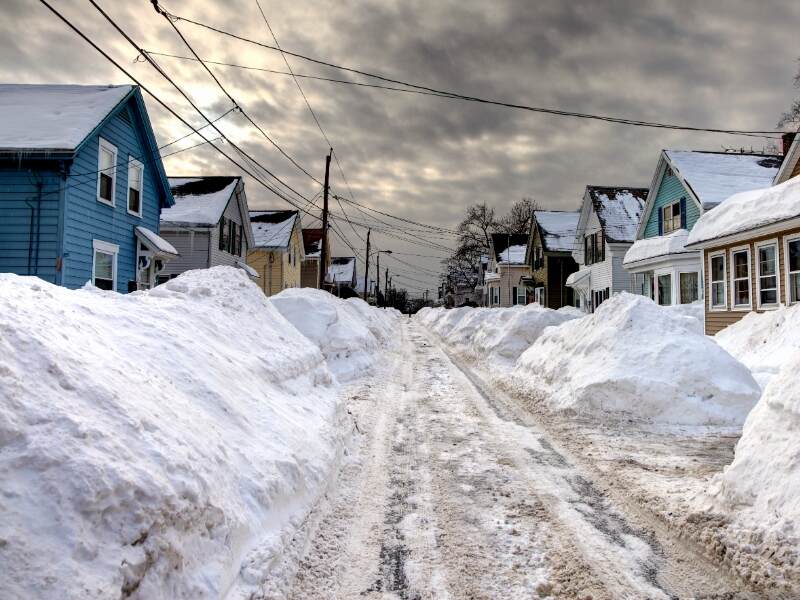
Photo Credit: DenisTangneyJr / Canva Pro / License
While fall is generally the most recommended time for seeding lawns, there are specific reasons why the other seasons may not be optimal for seeding. Here’s a breakdown of the challenges associated with each season:
Spring
Spring may be your second-best ideal time for planting due to milder temperatures and increased rainfall. But inconsistent weather patterns and fluctuating temperatures during these months, especially during early spring, will make you think otherwise. Plus, soil temperatures aren’t warm enough until April or May, and the air temperatures get very high by the end of May or early June.
These conditions can make it challenging for newly seeded grass to establish strong root systems before the onset of hot summer weather. And since weeds tend to thrive during spring, they can compete with the newly germinated grass for resources and hinder its growth.
Winter
Due to cold temperatures and frost, this time of year is not suitable for seeding. If your yard is covered in snow, it would be impossible to seed your lawn. And even without snow on the ground, new seeds require consistent soil temperatures above a certain threshold for germination to occur.
Summer
Most lawns in the state have cool-season grasses, which tend to go dormant when temperatures rise. Therefore, planting in the summer leads to poor seed germination and death of the seedlings.
Additionally, the high temperatures and increased evaporation rates during this season can lead to soil drying out quickly, making it challenging to keep the seedbed consistently moist, which is essential for germination.
How to Plant Grass Seed
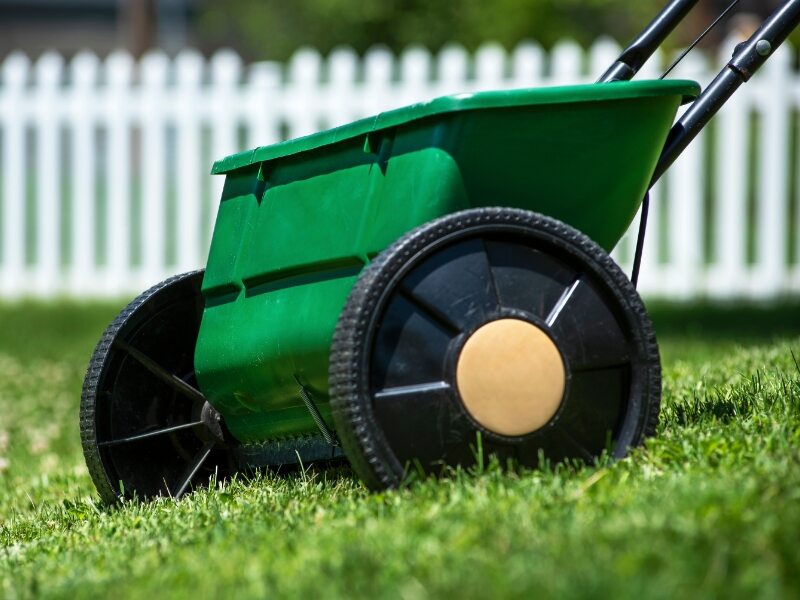
Photo Credit: Jon Rehg / Canva Pro / License
In Massachusetts, planting grass seeds is relatively easy. For a beautiful lawn, follow these simple steps:
- Plant at the right time: It’s best to plant grass in early fall. However, planting times can vary by region and grass type, so double-check before you begin.
- Ready the site: Remove dead grass, grade your lawn if needed, and rake where you plan to plant.
- Prepare the soil: For the healthiest lawn, you need the healthiest soil. Get your soil tested, then fertilize as needed.
- Choose the best seed: Think about your lawn’s soil, the sunlight it receives, typical foot traffic, and the time you can spare for maintenance. Then, choose the right grass seed type based on these factors.
- Plant the seed: With a spreader, distribute the grass seed. Be sure to follow the manufacturer’s instructions.
- Water appropriately: Water needs vary by grass type, so check your grass type’s water guidelines and follow them. Otherwise, you could end up with dead grass or additional lawn problems.
- Keep an eye on growth: Depending on the grass type, seedlings may take five to 21 days to emerge. As grass fills in, watch for bare spots and reseed as necessary.
- Mow and maintain: Mow and maintain your lawn according to grass-type guidelines.
Tips for Planting Grass Seed

Photo Credit: Ikostudio / Canva Pro / License
Planting grass seed isn’t hard, but sometimes the seed doesn’t take, and that’s frustrating. Before you pull your hair out, try these grass seed planting tips:
- Try using mulch or straw over the seed to encourage germination and growth.
- Hydroseeding is excellent for seeding in the summer or in poor soil conditions.
- Water less often but for longer periods of time to encourage roots to grow deep.
- If you need to replace your lawn or large sections, consider sod. Although it can be expensive, it saves a lot of time.
- You can try dormant seeding if you miss your window in the early fall. Overseed and, hopefully, grass will sprout in the spring. This method is often used with slow-growing grasses.
Once your lawn is established, mow it often to stimulate root and tiller growth. And remember to follow the 1/3 rule.
Best Grass Seed for Massachusetts
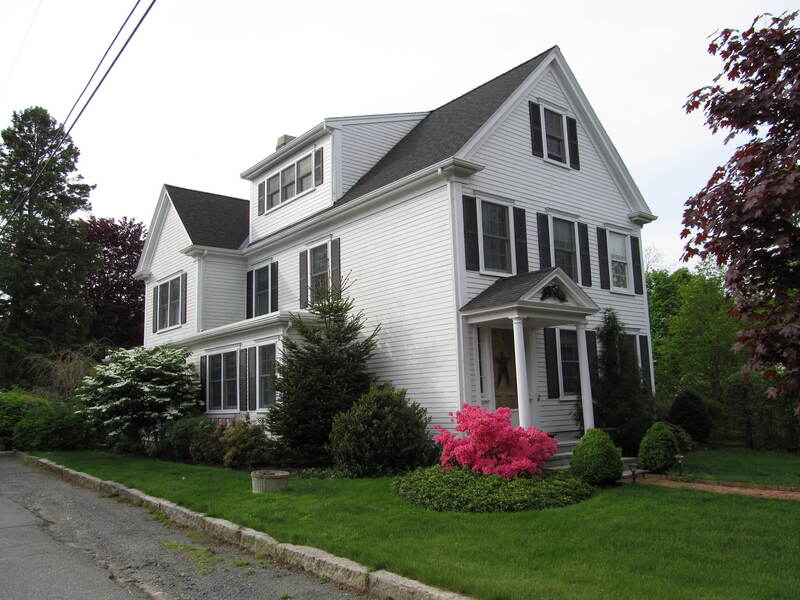
Photo Credit: Doug Kerr / Flickr / CC BY-SA 2.0
Massachusetts has sandy, acidic soil, which can be a challenge for some grasses. To cut down on maintenance, choose one of the five best grass seed types for Massachusetts.
Fine Fescue

Photo Credit: Paolinio / Pixabay / License
Fine fescue is one of the best grass seeds you can plant on your Massachusetts lawn due to its exceptional adaptability to the region’s diverse environmental conditions. With its tolerance for shade, drought, and poor soil quality, this cool-season grass thrives in various settings. Unless temperatures soar above 90 degrees Fahrenheit, fine fescue lawns stay green all summer long.
Kentucky Bluegrass
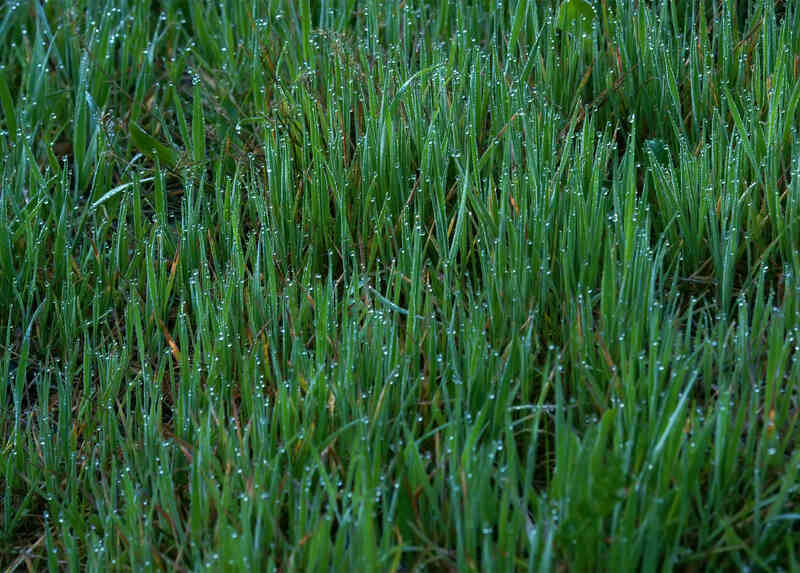
Photo Credit: Ferran Pestaña / Flickr / CC BY-SA 2.0
With its exceptional durability and moderate tolerance to foot traffic, Kentucky bluegrass creates a lush, dense turf that can withstand the harsh New England winters. It can easily recover from damage and fill in bare spots. However, its short roots can make absorbing essential nutrients and water challenging, so it’s often mixed with other grass types like fescues or ryegrass.
Perennial Ryegrass
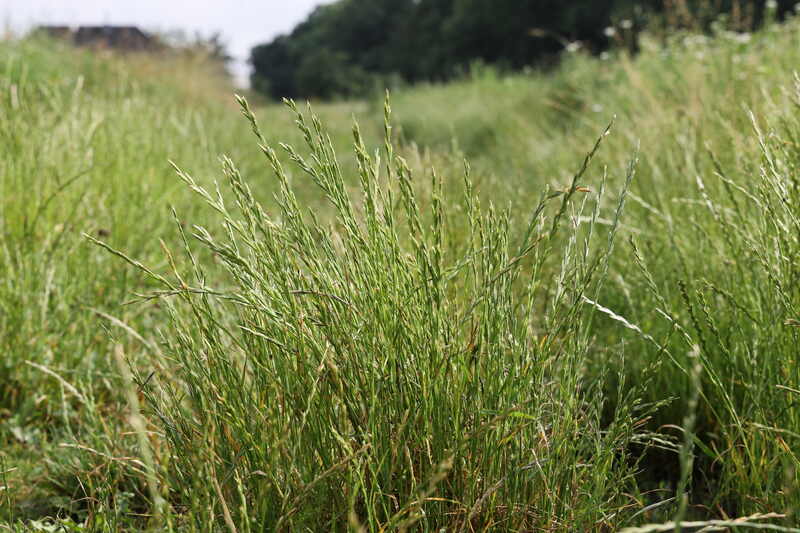
Photo Credit: T. Kebert / Wikimedia Commons / CC BY-SA 4.0
Perennial ryegrass creates an aesthetically pleasing turf with its fine texture and vibrant green color. It’s highly resistant to pests and diseases and boasts exceptional tolerance to cold temperatures and foot traffic. This cool-season grass has rapid germination and establishment speed, making it an excellent option for overseeding lawns. It’s also used as a companion or nurse grass to steady delicate grass types.
Tall Fescue
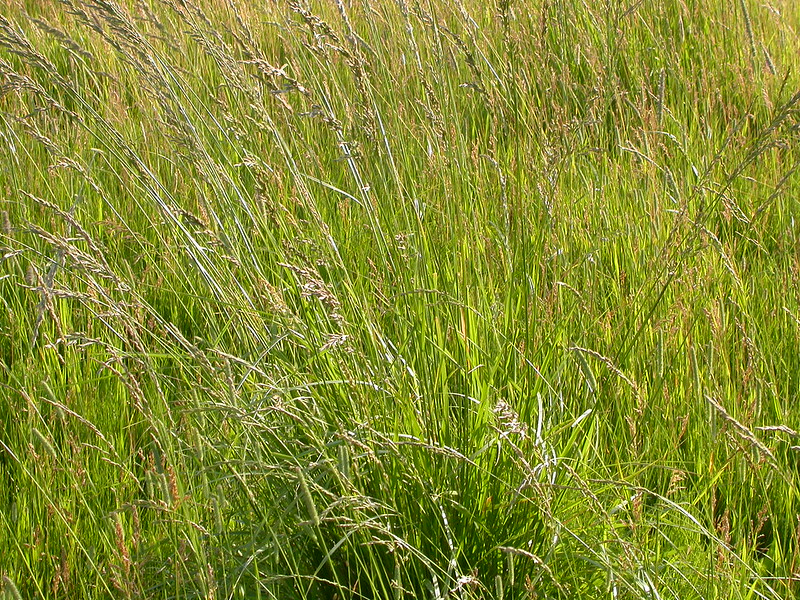
Photo Credit: Matt Lavin / Flickr / CC BY-SA 2.0
Tall fescue is unique from other popular Massachusetts grass types because of its shiny, wide, ribbed, dark green coarse leaves. With its excellent cold tolerance, it can survive frigid winters. But because of its bunched growth, it’s best used as a stand-alone grass. If mixed with other grass types, your lawn becomes patchy. It may require overseeding but not dethatching.
Zoysiagrass
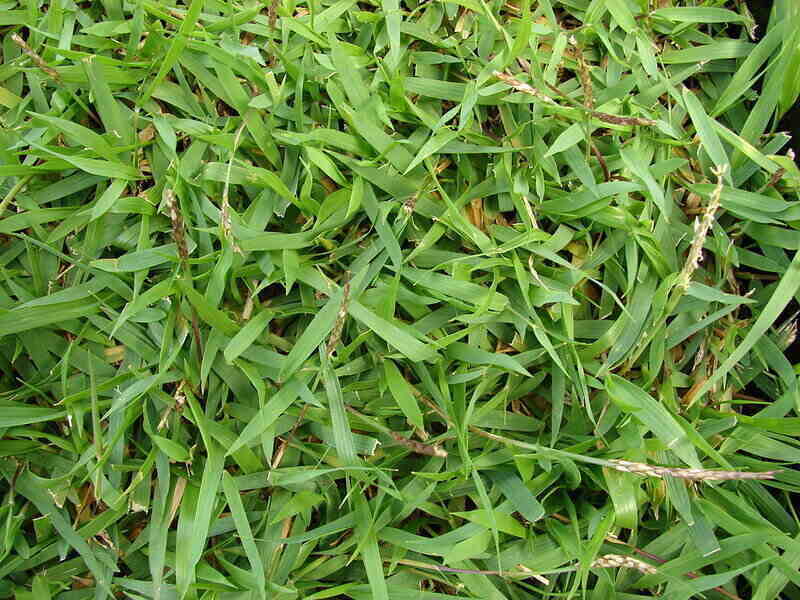
Photo Credit: Forest & Kim Starr / Wikimedia Commons / CC BY 3.0
While this warm-season grass may not be the best grass seed choice for planting in Massachusetts due to the state’s cooler climate, some homeowners still opt to use it. It thrives in regions with long, hot summers and mild winters, prefers full sun, and requires high temperatures to grow and establish properly. Hidden under snow, it will go dormant in the winter.
FAQ About Massachusetts Grass Seed
Not all grass seed is blue, but blue grass seed has a chemical coating. The coating helps seed germination, reduces the amount of needed water, and protects the seed from disease.
If you let the grass grow, seed heads will form at the top of a long thin stem, similar to crabgrass or wheat. Each grass type has different-looking seed heads, but they all form similarly.
Technically, yes. But while you can toss grass seeds onto your lawn, using a spreader is better for more even and successful seed distribution. Tossing seeds by hand can result in uneven coverage, leading to patchy or sparse areas of grass growth.
With a spreader, the seeds have a better chance of germinating and establishing a healthy, uniform lawn. It also helps control the amount of seed applied and prevents over-seeding or under-seeding in certain areas.
After Your Grass Seed is Planted
Once you’ve established your new lawn, keep it healthy by following these tips:
- Get rid of weeds if they pop up.
- Mow according to your type of grass.
- Watch out for and treat any pest problems.
- Follow best watering practices for your grass type.
- Practice good aeration and dethatching as needed.
- Watch out for lawn diseases and treat them swiftly.
- Choose native plants for your landscaping.
If you want a healthy, robust lawn but don’t have the time to maintain it, you’re not alone. It’s hard work, so many homeowners turn to highly-rated lawn care professionals to handle lawn maintenance. Whether you’re in Boston, Worcester, Springfield, Cambridge, Lowell, or somewhere in between, Wikilawn can help you.
Main Photo Credit: DenisTangneyJr / Canva Pro / License